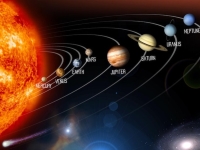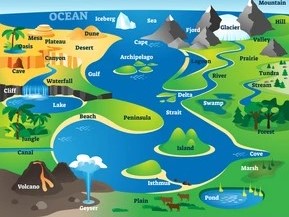Bài học cùng chủ đề
Báo cáo học liệu
Mua học liệu
Mua học liệu:
-
Số dư ví của bạn: 0 coin - 0 Xu
-
Nếu mua học liệu này bạn sẽ bị trừ: 2 coin\Xu
Để nhận Coin\Xu, bạn có thể:

Vocabulary SVIP
Look and match.



Match the words with their definitions.
Fill in the blanks to complete the passage.
Earth has four main : the inner core, outer core, mantle, and crust. At the center is the inner core, a solid ball of iron and nickel about 1,221 kilometers thick, with up to 5,400°C. Surrounding it is the outer core, a liquid layer 2,300 kilometers thick, also made of iron and nickel. The , the thickest layer, is 2,900 kilometers of hot molten rock. Finally, the crust is the outermost layer. On land, it is about 30 kilometers thick, while under the oceans, it is thinner, extending only about 5 kilometers from the to the mantle.
(Kéo thả hoặc click vào để điền)
Fill in the blanks to complete the passage.
Earth's atmosphere of 78% nitrogen, 21% oxygen, and 1% other gases, such as argon, carbon dioxide, and neon. It plays an important role in both the weather we experience every day and the climate over long periods. The atmosphere also us from dangerous radiation from the Sun. Additionally, it stops most meteoroids from the ground by burning them up in the sky. These burning meteoroids are called , and we can often see them at night before they disappear. This layer is essential for life on Earth.
(Kéo thả hoặc click vào để điền)
Fill in the blanks to complete the passage.
Earth's global ocean covers about 70% of the planet's and holds 97% of its water. The average of the ocean is about 4 kilometers. Most of Earth's volcanoes are under the oceans, including Mauna Kea in Hawaii, which is taller than Mount Everest but mostly underwater. The longest mountain range on Earth is also , located in the Arctic and Atlantic oceans. This is four times longer than the Andes, Rockies, and Himalayas combined, making it the largest mountain on the planet.
(Kéo thả hoặc click vào để điền)
The melting of ice caps is a(n) __________ to animals living in cold climates.
Earth's natural systems help regulate the balance of life on the planet.


Bạn có thể đánh giá bài học này ở đây